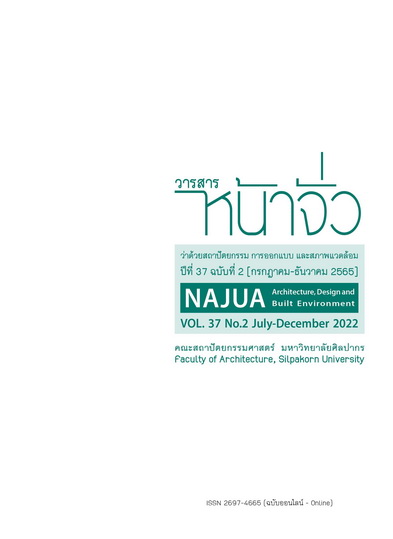Urbanization’s Influence on the Development of Pa Hiao Cultural Public Areas in the Municipality of Chiang Mai
Keywords:
Urban Expansion, Area Transformation, Pa HiaoAbstract
This research aims to study the urban expansion affecting the development of Pa Hiao into cultural public areas within the municipality of Chiang Mai. This qualitative research gathered data through field surveys of 10 Pa Hiao areas within the Chiang Mai municipality and conducted in-depth interviews with stakeholders, such as ritual practitioners, village leaders, and municipal representatives. The objective was to analyze the impact of urban expansion on changing land use patterns in Pa Hiao areas and to synthesize the transformation of Pa Hiao into culturally beneficial public areas.
The research findings reveal that all 10 Pa Hiao areas are still used for traditional funeral ceremonies, but in some cases, less than 40% of the area is allocated for these ceremonies. This reduction is due to changes in land use driven by the city’s growth and urban development plans. These ten Pa Hiao areas have transformed into six functions: 1) areas for ritual ceremonies, 2) government administrative use, 3) community activity areas, 4) sports and recreational areas, 5) green areas, and 6) areas for other activities. These transformations are a result of the city’s expansion, which has influenced the development of Pa Hiao into culturally beneficial areas that contribute to creating a better environment, improving the quality of life, and establishing enduring cultural public areas that reflect the values and identity of the Chiang Mai municipality.
References
Ministry of interior. (2021). Kan Hai Chai Bangkhop Phanrmueang Ruam Mueang Chiang Mai 2021. Royal Gazette, 138 (191), 9-16.
Sunanta,C., Laksana,S. (2021). “Kan Phoem Phuenthi SiKhiao Khong Mueang Nai Satsanasathan Praphet Wat Korani Sueksa Thetsaban Nakhon Chiang Mai”. Sarasatr academic journal, 4(1), 236-249.
Wattanachot P., and Nakfon P., (2023). “Kan Wikhro Khrueakhai Nayobai Nai Kan Phat thana Phuen Thi Satharana SiKhiao Nai Khet Krungthepmahanakhon”. Social science journal Chulalongkorn University, 53(1), 161-183.
Khamprasert I., (2023). “Kan Wikhro Prakotkan Kan Khlueanwai Khong Khabuankan Thang Sangkhom Phuea Kan Anurak Chumchon Mueang”. Khuang Phaya Journal, 17(1), 66-88.
Tiensap A., (2023). “Naeothang Kan Anurak Lae Phatthana Phum That Mueang Boran Chiang Saen Chiang Rai Province”. Sarasatr academic journal, 6(1), 166-179.
Arunrat, W., Chonthira,S., Sombat,B., Lamoon,C. (2003). Sitthi Chumchon Thongthin Phuenmueang Dangdoem Lan Na Korani Sueksa Chumchon Lua Yuan Lue Paka Ke a Yo Krariang Nai Changwat Nan Chiang Rai Lae Chiang Mai. BKK: Nititham Publishing.
Rojanasa-nga A. (2020). “Phuenthi Thang Watthanatham Nai Huean Thai Yai Ban Khlong Nam Sai Changwat SaKaeo”. Institute of Culture and Arts Journal, 21(2), 177-189.
Denzin, N. K. (1989). The research act (3rd ed.). McGraw-Hill.
Krejcie, R., & Morgan, E. (1970). “Determining Sample Size for Research Activities”. Educational and Psychological Measurement, 30(1), 607-610.
Downloads
Published
How to Cite
Issue
Section
License

This work is licensed under a Creative Commons Attribution-NonCommercial-NoDerivatives 4.0 International License.




